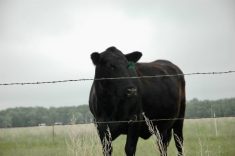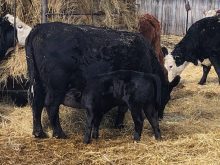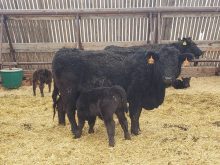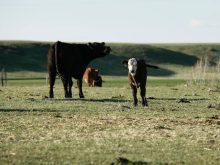We don’t see as many calving problems today because most producers try to use bulls that sire lower-birthweight calves, says Dr. Matt Miesner of Kansas State University. But there are still occasional problems, such as backward calves, when a calf puller is needed and cows and calves are injured by improper pulling, especially with a mechanical calf jack or calf puller.
“The sooner we can detect a problem and make the right kind of intervention, the better it is,” Miesner says. “Hopefully we can provide assistance before the cow is fatigued or the calf is dead.”
Read Also
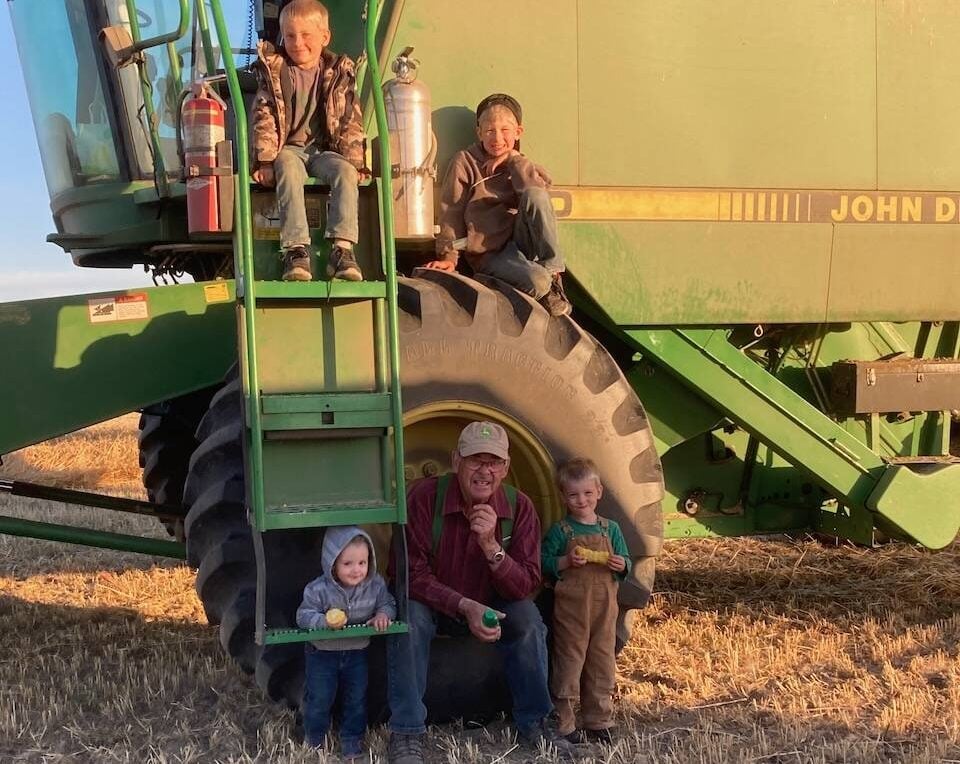
Harvest wraps up and fall work begins
At the Eppich famly ranch in western Saskatchewan, the fall harvest was successful with few breakdowns, cows and calves have been sorted and a new tractor has arrived
Part of being smart about proper use of a calf puller is knowing when not to use it, and opt for a C-section instead.
“If the calf isn’t coming, and you reach in and feel his head jammed against the cow’s pelvis with no room to force your fingers between the calf’s forehead and the pelvis, that means the calf won’t fit through. If I get both legs into the birth canal but the calf’s head will not enter, there is no use trying to pull that calf.”
Sometimes correcting a simple problem means you may not need the calf puller, because the cow then can go ahead and have it on her own or with minimal help. However, if it is a breech or backward presentation or even just a little bit big for a normal birth, a puller may be necessary.
“Most of the time you don’t need it,” Miesner says. “I always try to pull a calf by hand first, and if I have some help (on a fairly hard pull), that’s great. If not, then I turn to the calf puller. It can give the extra pressure when needed, and if a person ends up having to pull a couple calves a night, it’s nice to have that help.”
He says to be careful as a puller can apply up to 1,000 pounds of pressure and easily hurt the calf. He compares it to hanging over the edge of a building and then having someone hang 1,000 pounds on the ends of your arms. “It would do some damage,” he says. “The puller is a great tool — just use it correctly.”
If the birth isn’t progressing when using the puller, reach in again and check. It could be that the head turned is back or something is sideways. Even if you got the calf positioned correctly before you started pulling, sometimes things change.
One shoulder at a time
When it’s a big calf in a forward position and a tight fit, it helps to pull on each front leg alternately to bring the shoulders through the pelvis one at a time. This makes best use of the tight space and reduces the width of the calf coming through. “Pull alternately on the legs until the elbows come out,” Miesner says. “This belly crawl can help you get the calf out, and also limits the amount of overall pressure applied to the legs.”
Always assess the position of the calf before starting to pull. If the feet are pointing up rather than down, the calf may be backward. Feel inside to determine if it is a bit sideways or upside down. Make sure you have front legs rather than hind legs coming first and also check to see if it’s just one calf and not twins. Also, make sure the head is coming through (and not turned back) before you hook onto the legs and pull.
When attaching chains, make a double half-hitch on each leg, with one loop above and the other below the fetlock joint. “This distributes the pressure more evenly and is less likely to injure the joints or break leg bones,” Miesner says.
When applying pressure with the calf puller, do it slowly. The exception might be during the final stage of birth with a backward calf and you need to get it out quickly, but even then you want to start slowly, to give the cow time to stretch because the calf is not as streamlined.
Also, pull at the correct angle. The calf has to come up over the pelvic brim and then down. With a frontward-facing calf, pull straight out at first, then after the rib cage comes through you can pull downward. This will help raise the calf’s hips higher as they come through the pelvis.
Don’t pull downward too soon, or you may injure the calf’s ribs.
“On a backward calf, one of the most common injuries I see is broken legs (pulling the leg bones down against the cow’s pelvis),” Miesner says. “You don’t want to pull downward until the hind legs are clear out.” You also want to be careful to not pull downward very much or the backward calf’s ribcage may catch on the pelvis.
When pulling a backward calf, use lots of lubrication, and make sure you have enough cable to get the calf clear out. Depending on the type of calf jack, if it’s a long-legged calf, you may need to stop pulling for a moment after the hocks emerge, and reposition the chains from the lower legs to above the hock, so you won’t run out of winching room before the calf’s head is out. Once the hips are out and the umbilical cord is pinching off or broken, it needs to come out swiftly so it can start to breathe.
To get ready for calving season, if you haven’t used your calf jack for a long time, make sure it is in working order and lubricated before you need it. You don’t want it seizing up.
“I usually have some bolt cutters handy, just in case it does lock up, and then I can cut the chain,” Miesner says. “Every now and then even the best calf jack will bind, and then you have to cut the chain to get it off.”



